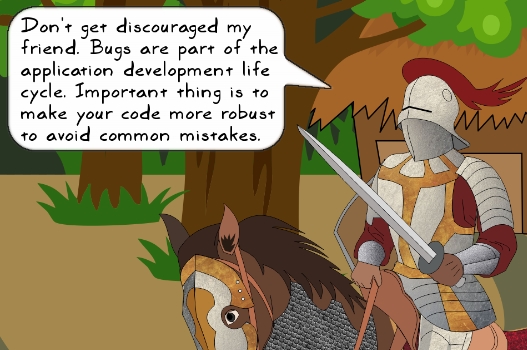The heal feature added in v1.0.0 became a hit among the core users. The OOP approach put you in a better position to implement new features (or so you thought!). As the feature requests started pouring in, so did the reported bugs.
|
The game is OK, but there are several annoyances. For example, when prompted to choose a hut, sometimes I input a number greater than 5 or input a character by mistake. After this, it just prints some weird error message and the application terminates. Can you fix this? |

Let's try to reproduce the reported problem. Run the example from Chapter 1, Developing Simple Applications:
$ python ch01_ex03.py
When prompted for the hut number, enter any character, as shown in the following screenshot:

The application is terminated with an error traceback
in the console. A traceback is a snapshot of the call stack at the point where the exception (the error) occurred. In this particular example, the _process_user_choice...

